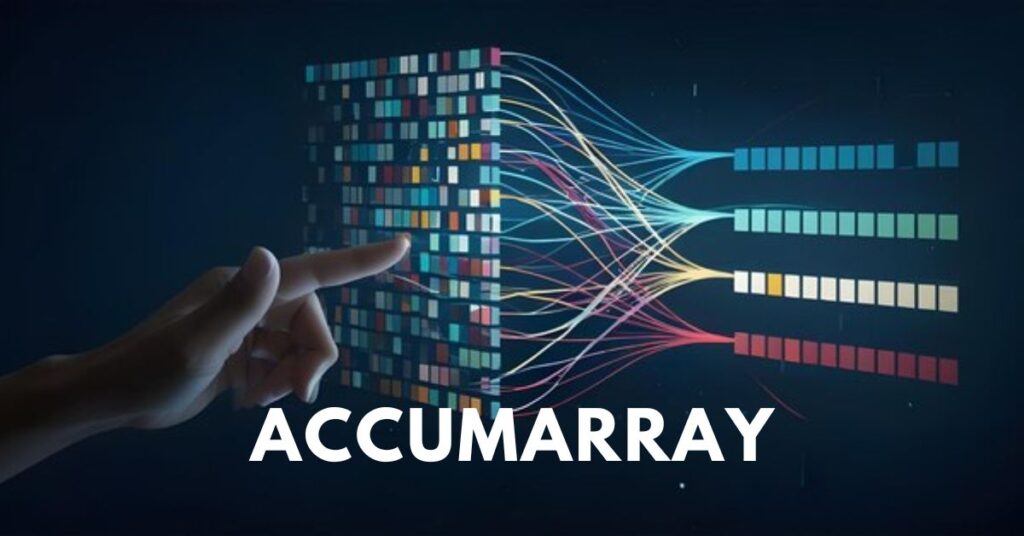Data is everywhere, and with its ever-increasing volume, organizing it effectively has become essential. One powerful tool that can make this task easier is accumarray. If you’ve ever found yourself tangled in the complexities of data binning, you’re not alone. Traditional methods often feel cumbersome and time-consuming. Thankfully, there’s a solution at hand.
Imagine being able to streamline your data processing effortlessly while retaining accuracy and clarity. That’s where accumarray comes into play. With its unique approach to aggregating data based on specified indices, it simplifies what could otherwise be a daunting task.
Ready to delve deeper into how accumarray works? Let’s explore the ins and outs of this invaluable function!
Understanding Data Binning of accumarray
Data binning refers to the process of grouping data points into discrete categories or bins. This technique is essential when analyzing datasets, as it transforms raw data into a more manageable form.
With accumarray, this process becomes intuitive and straightforward. Rather than manually sorting through values, accumarray automatically organizes data based on specified indices. It allows users to define how they want their values collected and aggregated within these bins.
The beauty of using accumarray lies in its flexibility. You can easily apply various aggregation functions like sum, mean, or even custom calculations tailored to your needs.
This functionality makes it ideal for handling large datasets efficiently while maintaining clarity in analysis. Understanding this core principle sets the stage for leveraging accumarray’s full potential in your projects.
Traditional Methods of Data Binning accumarray
Traditional methods of data binning often involve manual categorization. This approach can be labor-intensive and prone to human error. Analysts typically use tools like histograms or custom scripts to group data points, which can lead to inconsistencies.
Moreover, these methods may not scale well with large datasets. As data volumes increase, the complexity of managing bins also rises. It becomes difficult to maintain accuracy across multiple iterations.
Another common challenge is determining appropriate bin sizes. Too many bins can create noise in the analysis, while too few may oversimplify nuanced trends within the data.
Many traditional techniques rely on fixed intervals that do not adapt based on the distribution of values. This rigidity limits flexibility and responsiveness in dynamic datasets where patterns shift over time. Adapting these older methods requires significant effort and expertise from users, often making it an inefficient choice for modern analytics demands.
Introducing accumarray: What it is and How it Works
accumarray is a powerful function in MATLAB that streamlines the process of data binning. It allows users to group data based on specified indices and then apply a predefined operation, such as summation or averaging.
At its core, accumarray takes two main inputs: the index array and the values array. This combination enables you to organize your data efficiently. For example, if you’re working with sensor readings over time, you can categorize these readings by different sensors using their respective indices.
What sets accumarray apart is its versatility. You can easily customize operations for each group of data. Whether you’re calculating statistics or simply aggregating values, this function handles it seamlessly.
This makes it an ideal choice for large datasets where traditional methods might falter due to complexity or performance issues. With accumarray, organizing and analyzing your data becomes straightforward and efficient.
Benefits of Using accumarray for Data Binning
Using accumarray for data binning brings remarkable efficiency to your workflows. It streamlines processes that might otherwise be cumbersome with traditional methods.
This function allows you to quickly gather and summarize large datasets, saving valuable time. The flexibility of accumarray means it can handle various data types effortlessly.
Another benefit is its ability to handle non-uniform bins easily. You can define custom indices, allowing for tailored analysis specific to your needs.
Accuracy improves as well; by reducing the potential for human error common in manual calculations or coding approaches, results become more reliable.
The integration with MATLAB makes it user-friendly even if you’re new to programming. With simple syntax and robust functionality, anyone can dive into advanced data analysis without a steep learning curve.
Examples of Using accumarray in Various Applications
Data scientists often turn to accumarray for its versatility across different scenarios. One common application is in data analysis, where researchers might group survey responses by demographic categories. This allows for quick aggregations of averages or counts.
In financial modeling, accumarray can simplify portfolio management. By grouping transactions by asset type, investors can easily compute total gains or losses over specific periods without extensive coding.
Another notable usage is in image processing. When analyzing pixel values across various regions, accumarray helps consolidate results based on color intensity or brightness levels, streamlining the computation process.
Moreover, in machine learning projects, this function aids feature engineering by efficiently aggregating features from large datasets based on category labels. Each example highlights how accumarray enhances efficiency and clarity in diverse fields.
Potential Challenges and How to Overcome Them
Using accumarray can be a game-changer, but it’s not without its challenges. One common hurdle is handling large datasets. When working with extensive data, memory limitations may arise.
To mitigate this issue, consider breaking your data into smaller chunks before applying accumarray. This approach can help manage memory efficiently and improve performance.
Another challenge lies in ensuring correct indexing. Mistakes in index assignment could lead to inaccurate results. To avoid this pitfall, always double-check your indices and validate them against your original dataset.
Users might find the syntax a bit daunting at first glance. Familiarizing yourself with examples can simplify learning curves significantly. Experimenting with sample datasets allows for hands-on practice that builds confidence.
By addressing these potential challenges proactively, you’ll harness the full power of accumarray while minimizing frustration along the way.
Conclusion
Data binning is a crucial technique in data analysis, allowing for easier interpretation of large datasets. Traditional methods can often be cumbersome and time-consuming. However, the introduction of accumarray simplifies this process significantly.
By aggregating data based on specific criteria, accumarray enables users to streamline their workflows effectively. The benefits are numerous: improved efficiency, reduced complexity, and enhanced accuracy in results.
From statistical analyses to machine learning applications, the use cases for accumarray are diverse and impactful. It empowers analysts to make insightful decisions quickly without getting bogged down by tedious processes.
While there may be challenges when implementing accumarray—like understanding its parameters or integrating it with existing systems—these obstacles can be overcome with practice and support.
The power of accumarray lies in its ability to transform complex data into manageable insights effortlessly. Embracing this tool not only enhances productivity but also enriches your overall analytical capabilities. Whether you’re a seasoned analyst or just starting out in your data journey, accumulating knowledge through tools like accumarray will undoubtedly lead you toward more informed conclusions.
FAQs
What is “accum array”?
accumarray is a MATLAB function designed to simplify the process of data binning. It organizes data based on specified indices and applies a defined aggregation function, such as sum or mean, to group data efficiently.
How does accumarray streamline data binning?
accumarray automates the grouping of data into bins using indices and aggregation functions, eliminating the need for manual categorization and reducing the complexity of data management.
What types of aggregation can accumarray perform?
accumarray can perform various aggregations, including summation, averaging, and custom calculations, depending on the function you specify. This flexibility allows for tailored data analysis.
Can accumarray handle large datasets effectively?
Yes, accumarray is well-suited for large datasets. However, for very large datasets, it’s advisable to manage memory efficiently by processing data in chunks if needed.
What are common challenges when using accumarray, and how can they be addressed?
Common challenges include handling large data volumes and ensuring correct indexing. These can be managed by breaking data into smaller chunks and double-checking index assignments for accuracy.







